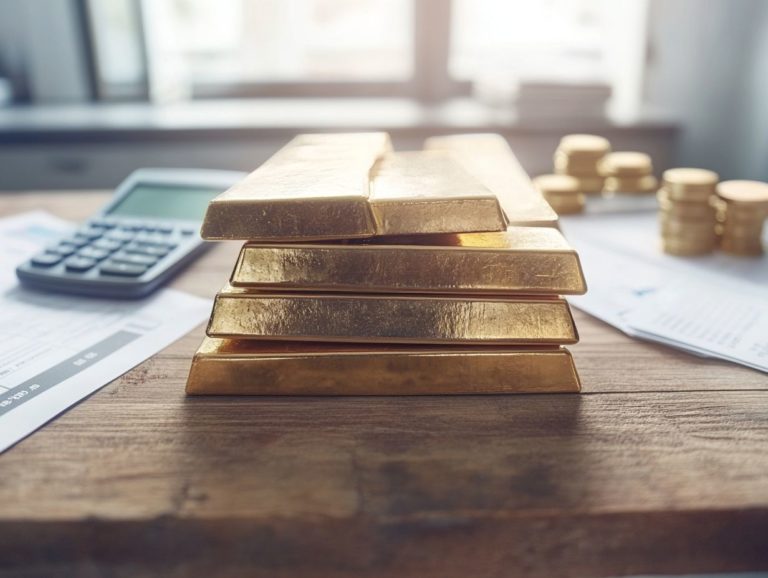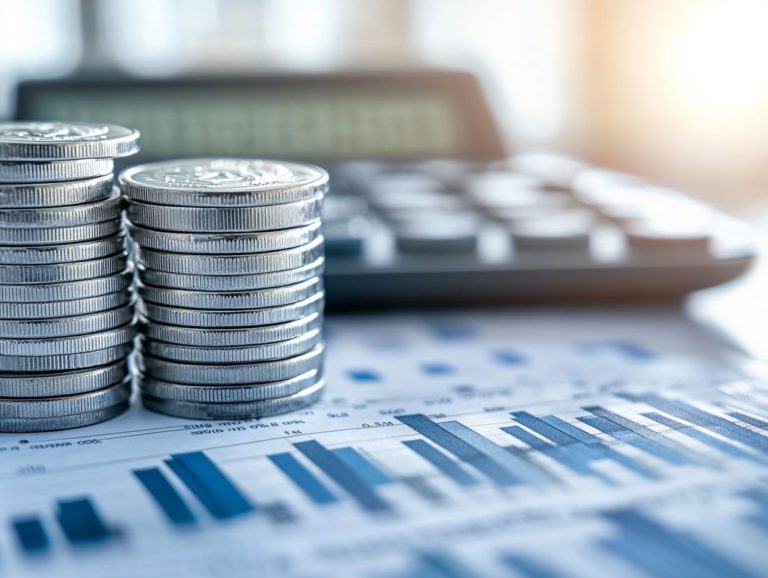The Benefits of Physical vs. Paper Precious Metal Investments
Investing in precious metals can be exciting and rewarding! The choice between physical and paper investments requires thoughtful consideration.
Each option has distinct advantages tailored to various investment strategies and risk levels. This article explores the benefits of tangible assets, including their ability to shield against inflation and provide a sense of control. It will also highlight the liquidity and convenience offered by paper investments.
Key considerations will be laid out to guide you toward a decision that aligns with your financial objectives.
Contents
Key Takeaways:
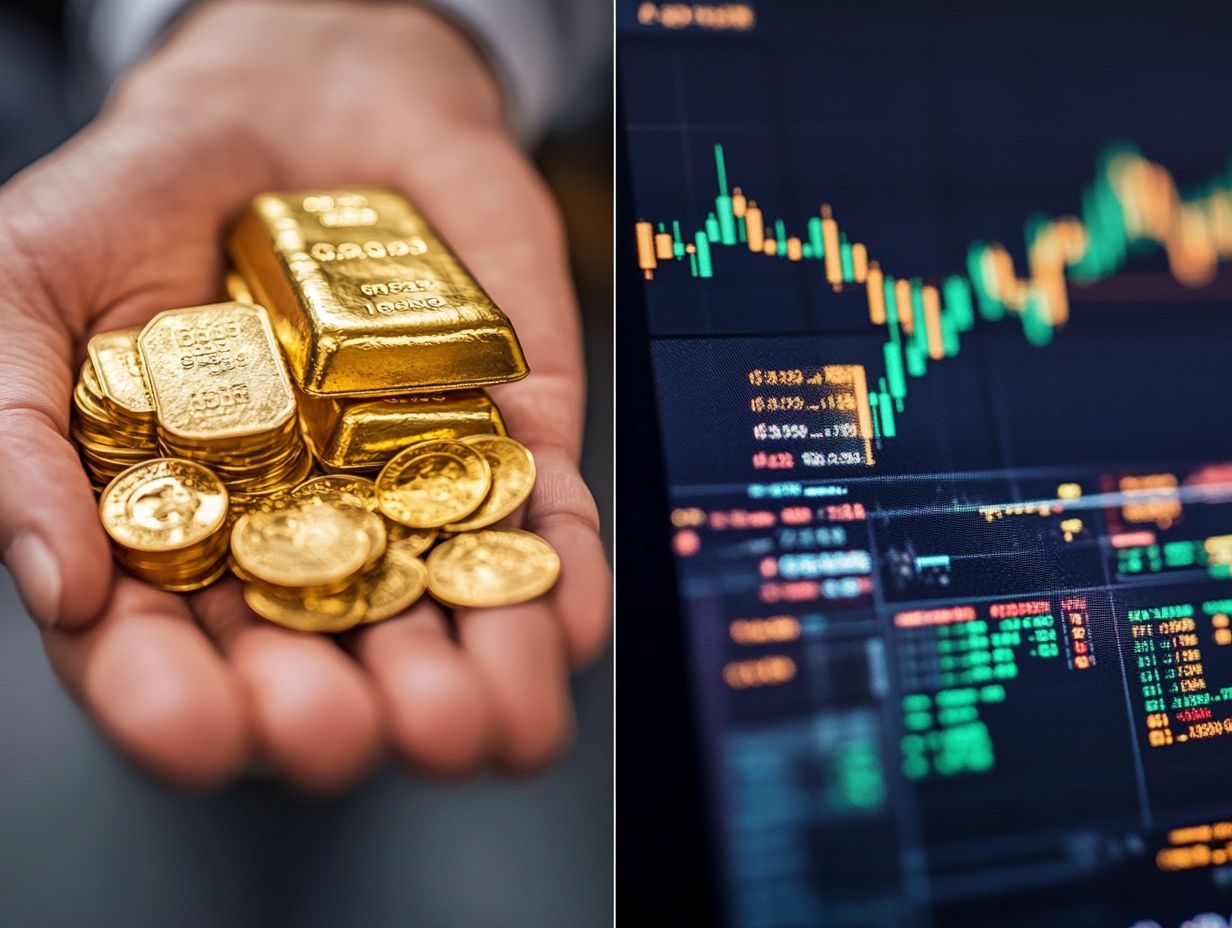
- Physical precious metal investments provide tangible assets and protection against inflation, making them a secure long-term investment.
- Paper precious metal investments offer liquidity and diversification, allowing investors to easily buy and sell without the burden of physical storage.
- Think about your risk tolerance and investment goals. Also, consider current market conditions to ensure you make the best choice for your portfolio.
What are Physical and Paper Investments?
Understanding the difference between physical and paper investments is essential for you as an investor aiming to diversify your portfolio and protect your wealth, particularly during market downturns.
Physical investments, like gold and silver bullion, offer tangible assets, while paper investments, such as Exchange-Traded Funds (ETFs), provide liquidity and convenient access.
Grasping these distinctions is key to crafting a strong investment strategy that aligns with your financial objectives and risk appetite.
Benefits of Physical Precious Metal Investments
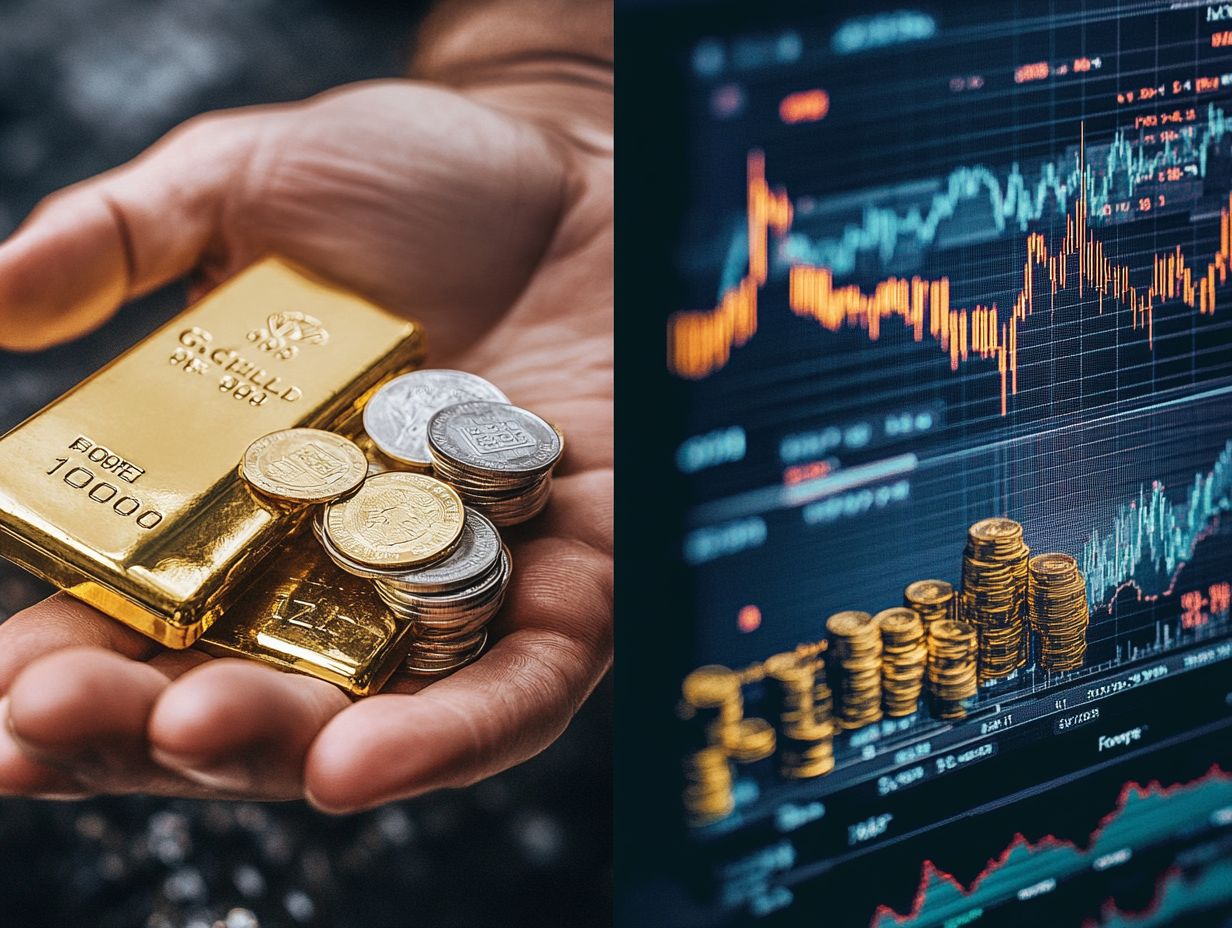
Investing in physical precious metals, such as gold and silver bullion, presents numerous advantages that should interest discerning investors looking to hedge against inflation and safeguard their wealth.
Consider iconic coins like the American Gold Eagle and Silver Eagle, along with gold bars. These tangible assets can provide a stable refuge amid economic uncertainty and market fluctuations.
Tangible Asset and Inflation Protection
Physical gold and silver serve as tangible assets that provide a robust defense against inflation. They help you retain your wealth, even in times of economic turmoil.
As fiat currencies fluctuate, precious metals often increase in value, making them a prime choice for anyone keen to safeguard their financial future.
Historically, during significant inflationary periods like the 1970s gold prices soared, showcasing their role as a safe haven. Data reveals that gold’s value nearly quadrupled from 1971 to 1980, while the purchasing power of currencies declined.
Similarly, silver has often mirrored this trend, acting as a hedge against inflation and currency devaluation.
In today s unpredictable economic landscape, it’s no surprise that more and more investors are rushing to secure these physical assets, which provide a sense of security, liquidity, and intrinsic value that digital alternatives cannot match.
Control and Accessibility
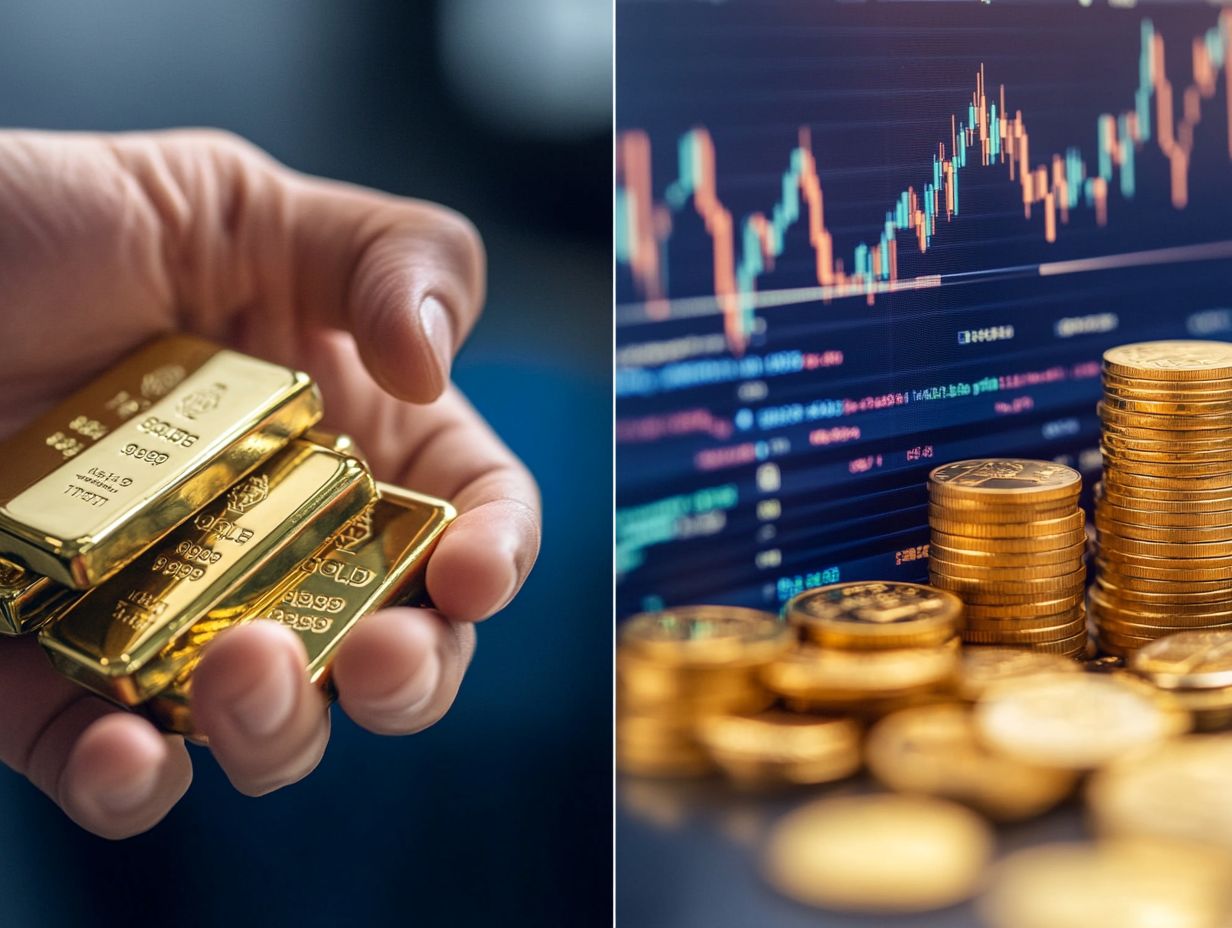
Investing in physical gold and silver grants you remarkable control and accessibility that paper investments often lack. By holding tangible assets like bullion and coins directly, you can ensure your assets remain safe and within reach, especially during financial uncertainties.
This direct ownership eliminates the risks associated with intermediaries, providing a layer of security that paper assets simply cannot match. You have the freedom to choose from various storage options, whether it s a personal safe at home or a secure vault from a trusted service.
With physical gold and silver in your possession, you can quickly liquidate your investments whenever needed, bypassing the complex processes or market conditions that paper assets often require for sale. This immediate liquidity is crucial during emergencies or market fluctuations, making tangible assets even more appealing for discerning investors.
Benefits of Paper Precious Metal Investments
Paper investments like ETFs offer great advantages. They provide quick buying and selling options, which is essential in today’s volatile market.
With these options, you can easily invest in gold and silver. Plus, you avoid the hassle of storing physical metals.
Quick Access and Portfolio Balance
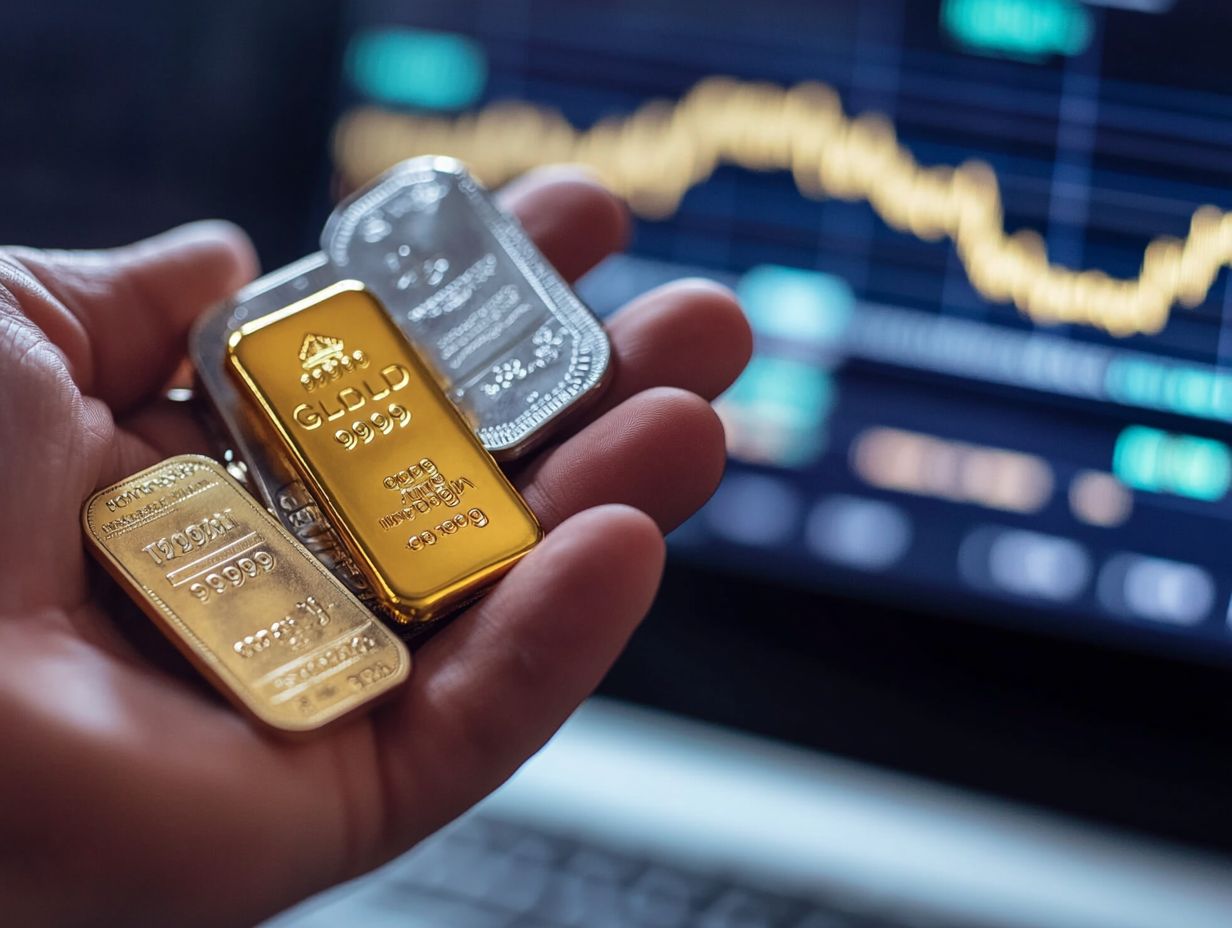
One major advantage of paper investments, like ETFs, is how quickly you can enter or exit positions as market conditions change.
This is crucial during market downturns, where quick asset adjustments may be necessary. ETFs also provide an excellent chance to balance your portfolio, lowering your risks from any single investment.
By including a variety of underlying securities, particularly in precious metals, you can create a more balanced investment strategy. These instruments simplify your access to precious metals and help cushion against market swings.
This makes paper investments appealing for those looking to reduce risks while enjoying the benefits of quick access all key parts of a strong financial strategy.
Lower Costs and Convenience
Investing in paper precious metals, especially through ETFs, usually costs less than buying and maintaining physical assets. This allows you to invest your funds in other opportunities while still participating in the precious metals market.
Unlike physical metals, which incur costs for storage, insurance, and transportation, ETFs streamline the entire process. By eliminating the transaction fees typically associated with buying and selling tangible assets, you can boost your returns without logistical hassles.
Managing a portfolio of paper options is easy; it often takes just a few clicks on your investment platform. This saves you time and offers peace of mind.
With these numerous benefits, it’s clear why many investors prefer this method over the complexities of physical investments.
Factors to Consider When Choosing Between Physical and Paper Investments
When deciding between physical and paper investments in precious metals, consider several important factors. These include your risk tolerance, investment goals, and current market conditions.
This decision affects your potential returns and how much control and access you have over your assets.
Understanding Your Risk and Goals
Knowing your risk tolerance and investment goals is key when choosing between physical and paper investments in precious metals.
If you see yourself as a conservative investor, you may lean towards tangible assets like gold and silver bullion. On the other hand, if you’re more aggressive, you might prefer ETFs for their potential higher returns.
This distinction matters because it shows how market changes can impact different investment types. For instance, if you value stability and worry about market fluctuations, you may choose to hold actual coins or bars for safety during economic downturns.
Conversely, if you’re comfortable with more risk, you might explore mining stocks or commodity-focused funds to take advantage of price changes and increased market activity.
Ultimately, aligning your investments with your risk profile helps you achieve your financial goals and builds confidence in your choices.
Market Conditions and Trends
Understanding market trends is crucial for making smart investment choices! Market conditions greatly impact your choice between physical and paper precious metal investments. Factors like economic stability, inflation rates, and market fluctuations can influence your preferences significantly.
Inflation is rising, and economic uncertainty is growing. It s time to rethink your investment strategies. The tangible nature of physical assets, such as gold and silver, becomes particularly appealing when paper investments feel precarious. Geopolitical tensions add to these concerns and prompt many investors to seek the security that physical holdings can offer.
As a savvy investor, you may notice the increasing demand for precious metals in industrial applications. This hints at potential long-term value. These dynamics encourage you to weigh the risks of paper investments against the protective qualities of real metals.
Frequently Asked Questions
- Why should you invest in physical precious metals?
Physical precious metal investments offer tangible assets that you can hold and store. They provide a sense of security and protection against economic instability, along with potential long-term growth and a hedge against inflation. - What are the benefits of paper precious metal investments?
Paper investments, such as stocks and mutual funds, offer convenience and flexibility in buying and selling. They allow for diversification within the precious metals market and typically have lower transaction costs than physical investments. - How does physical precious metal investing differ from paper investing?
Physical investing involves purchasing actual assets like coins or bars, while paper investing requires buying stocks, ETFs, or other financial instruments that represent ownership of precious metals. - What are the advantages of holding physical precious metals over paper assets?
Holding physical metals gives you ownership and control without the risk of third-party default. Physical assets aren’t subject to market fluctuations or financial manipulation. - Can physical precious metal investments be more challenging to manage compared to paper investments?
Yes, physical investments require proper storage and security measures, as well as additional costs like insurance and storage fees. However, the potential for long-term growth and protection against economic instability can make them worth the extra effort. - Are there any tax advantages to physical precious metal investments over paper investments?
This varies depending on your location and the specific metals you invest in. Generally, physical investments may offer tax benefits, such as lower capital gains taxes, compared to paper investments. Consult a financial advisor for personalized tax advice.
Now is the time to consider physical assets! Consult a financial advisor or explore investment options today.

